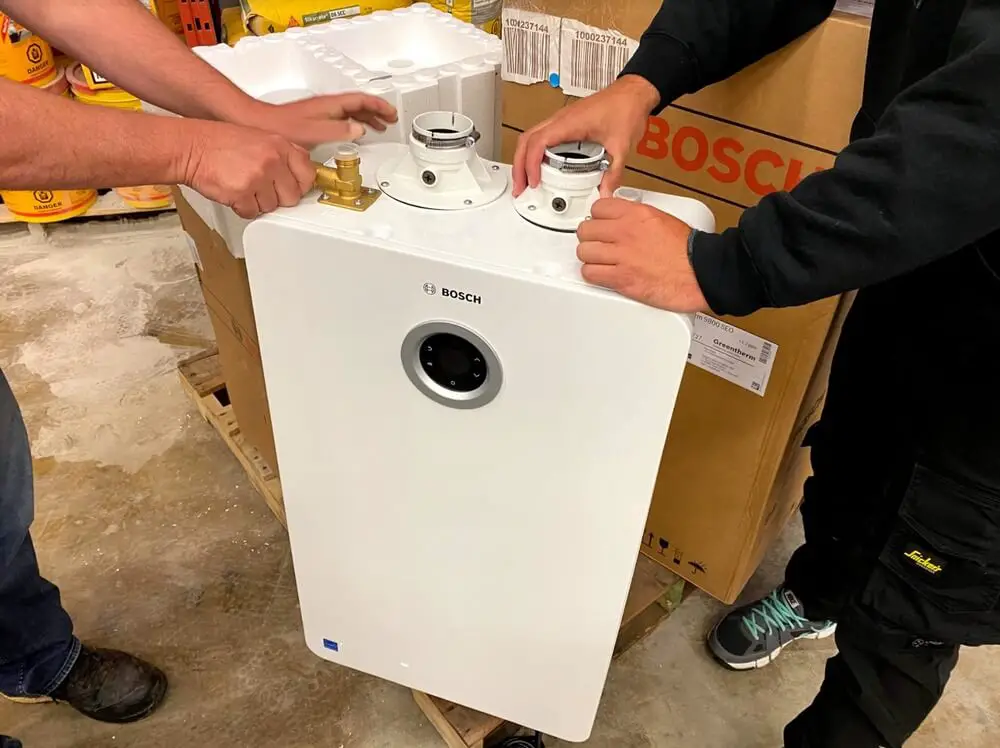How big of a tankless water heater do i need?
In the contemporary world, with a strong emphasis on energy conservation and cost-efficiency, homeowners are consistently on the lookout for ways to enhance their home’s performance and reduce utility expenses. One solution that has been gaining substantial recognition is the tankless water heater.
Tankless water heaters provide hot water exactly when you need it, marking a possible breakthrough in energy efficiency and cost-effectiveness compared to standard water heaters, which store and heat a finite amount of water.
Nevertheless, choosing the appropriate size unit for your house is essential to maximizing the advantages of this technology. We will explore the world of tankless water heaters in this blog post, providing helpful information on how to choose the ideal size to satisfy your particular needs.
How Big of a Tankless Water Heater Do I Need

Tankless water heaters, also known as on-demand or instantaneous water heaters, heat water as it flows through the unit. This differs from conventional tank water heaters, which store and maintain a set amount of hot water.
Tankless heaters are known for their efficiency, as they only heat water when you need it, which can lead to significant energy savings. However, their effectiveness depends on choosing the correct size.
Related: How To Make Water Heater More Efficient
Factors to Consider When Sizing a Tankless Water Heater
- Flow Rate
GPM, or gallons per minute, is the unit of measurement for a tankless water heater’s flow rate. It plays a crucial role in determining the appropriate size for your residence, ensuring optimal performance and efficiency for your hot water needs. To accurately compute the maximum flow rate your household requires, it is important to consider various factors.
One of the key considerations is the number of fixtures that will be in use simultaneously, such as showers, faucets, and appliances. Each fixture has a specific GPM rating, typically provided on the manufacturer’s label. By summing up the GPM of all fixtures running simultaneously, you can determine the minimum flow rate your tankless water heater should provide.
For a rough estimate: For 1-2 fixtures running simultaneously, a flow rate of approximately 3.5 GPM is recommended. If you have 2-3 fixtures running at the same time, a flow rate of 5 GPM is more suitable.
And if you’re using 3-4 fixtures simultaneously, a flow rate of 7 GPM is recommended. While these numbers can naturally differ from one household to another, they serve as a preliminary estimate of the appropriate unit size for the majority of homes.
Additionally, it is recommended to take into account any future changes or additions to your household, such as new fixtures or increased water usage. This forward-thinking approach will help ensure that your tankless water heater can accommodate any potential changes and continue to meet your hot water demands.
By considering these details and accurately calculating the required flow rate, you can confidently choose the right size tankless water heater for your residence, providing you with a continuous supply of hot water while optimizing energy efficiency. [1]
- Temperature Rise
The temperature increase, also referred to as the delta temperature, is the variance between the desired hot water temperature and the incoming cold water temperature. It serves as a crucial factor in determining the efficiency and suitability of a tankless water heater for your specific needs.
For instance, if your groundwater temperature is 50°F and you desire a hot water temperature of 120°F, the temperature rise would be 70°F.
Choosing the perfect tankless water heater for your environment involves considering its rating, which is determined based on its ability to achieve specific temperature increases. In regions with colder climates, where the groundwater is colder, a higher temperature rise capability is necessary to ensure optimal performance and comfort.
- Sizing Charts
Manufacturers provide sizing charts to help you choose the right tankless water heater for your home. These charts account for variables such as the total number of bathrooms, local climate, and peak demand for hot water. You can obtain a general sense of the size you require by consulting these charts.
- Professional Advice
Consulting with a professional plumber or HVAC technician is often the most accurate way to determine the right size for your tankless water heater. They can assess your home’s specific requirements and recommend the appropriate unit.
Related: Stiebel Eltron vs Bosch
Conclusion
Tankless water heaters can be a remarkable enhancement for any household, offering not only energy efficiency but also the luxury of endless hot water on demand.
However, to truly optimize this technology, selecting the appropriately sized unit tailored to your household’s unique requirements is absolutely essential.
By taking into account critical factors such as flow rate, temperature rise, and seeking guidance from experienced professionals, you can confidently choose the ideal tankless water heater for your home.
Bid farewell to those chilling cold showers and exorbitant energy bills, and welcome the comfort and efficiency that a correctly sized tankless water heater can bring into your daily life.
Read Next: Rinnai vs Rheem Water Heaters

Michael Davis is a heating & plumbing expert who currently works as independent contractor in SC. He also writes for Plumbertip.
For almost 10 years he worked on various plumbing tasks across South Carolina.



